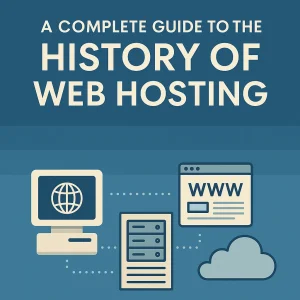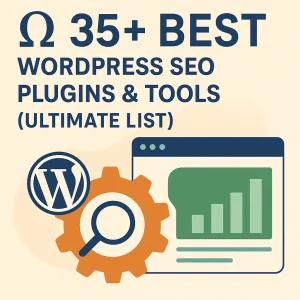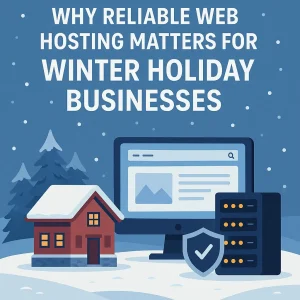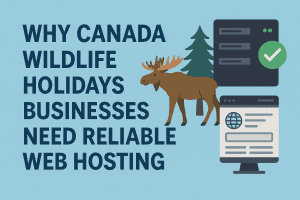 Google is never one to stay the course for long, and this month they’re introducing a new security standard. Site owners and SEO experts that don’t make necessary changes may be seeing a significant drop in their search rankings and it’s certainly not something you want to be putting off for long.
Google is never one to stay the course for long, and this month they’re introducing a new security standard. Site owners and SEO experts that don’t make necessary changes may be seeing a significant drop in their search rankings and it’s certainly not something you want to be putting off for long.
4GoodHosting has established itself as one of the best Canadian web hosting providers, and along the way we’ve grown accustomed to have our thumbs on the pulse of trends in the online marketing world. We know how essential it is for business owners to be readily visible on the Web, especially given how web searches make up an ever-greater majority of how customers find retailers and providers.
With the new Google Chrome 62 update, the search engine will designate any HTTP page that contains a form requiring a customer to fill out anything as being insufficiently secure. The consensus is that this is going to have a massive effect on search rankings, primarily because nearly every site uses a variation of a form on at least one page of their site.
This is also going to extend to blogs that allow users to log in for posting comments and to make a long story short - basically every website online may be impeded by this update.
This needs to be on the radar for site owners, SEO experts, Pay Per Click specialists, and AdWords consultants, but when we got the why of it all we need to first explore a previous update from March of this year, Chrome 56.
Chrome 56 & New Security Protocol
Google rolled out the Chrome 56 update 7+ months ago, and with it changed security protocol for websites online. Websites that requested a password from a user that was not encrypted were labelled as ‘not secure’ in the address bar.
This meant that websites would now need an SSL certificate. With one, any connection or data shared between the site and the user is completely secure. The encrypted information is by and large entirely secure, and will foil even the best of hackers 9 times out of 10. An SSL certificate also reassures users that they are on an authentic site and that they’re avoiding scams.
It goes without saying that security is important for website owners online, and especially so when you’re selling products. It’s understood that somewhere in the vicinity of 84% of shoppers will abandon a website long before making a purchase if they discover that the site is not secure. Many of these users will of course make that decision shortly after seeing a site being designated as ‘not secure’ in the URL bar.
Chrome 62’s Potential Impact
Google’s official announcement for Chrome 62 didn’t provide much in the way of information on the new security protocol. Don’t see this at as a sign that you can sit tight, as it could end being detrimental to your site.
According to Google, the official line on the update is as follows:
“Chrome will show the ‘not secure’ warning in two additional situations: when users enter data on an HTTP page, and on all HTTP pages visited in Incognito mode.”
Right, not every user online uses Chrome. However, a report from earlier in 2017 revealed that Chrome leads the market quite handily as the preferred search engine, laying claim to 58.4% of the market share. With that understood it’s clear that any factor impacting a site’s ranking on Chrome could have huge implications for a business and how successful it is being in business online.
Websites with less than what’s seen to be full security could come to see lower conversion rates and fewer visitors spending more than a moment on the website. The question becomes what can we expect for the impact to search rankings, will it be direct or indirect?
Search Ranking Impacts
HTTPS And SSL both have weight for Google when it comes to a ranking signal, and can even be used as a tiebreaker when making the decision on which site claims top spot. By having a secure site as officially recognized by the new update, owners can ensure that their site is not hit and bumped below a similar competitor. In fact, ensuring full SSL certification will almost certainly boost search rankings if the process is completed thoroughly and accurately.
Look for the security of a site to now have a far greater impact on where a site ranks in the SERPs. Again, the consensus seems to be that any site without full security will never receive a place on page one of the SERPs, and likely not even in the top 5 or worse, particularly with competitive keyword incorporation and phrase results.
This is big, as research has indicated that websites on the first search engine results page commandeer 95% of web traffic. All that’s left for those relegated to the remaining pages is that five percent, and that’s not much at all. Keep in mind as well that many users never go beyond the first five results. Anything that gives you an advantage against a competitor is now more valuable than ever, and some of them will have sites that do not have the security to escape the damaging ‘not secure’ label.
There is also an indirect impact to consider here, though, and it’s bounce rate. If a user clicks on a site and it comes up as ‘not secure,’ they are quite likely going to to click off and leave the site entirely. The number of users per clicks that do this is called the bounce rate, and it’s not hard to see how bounce rates are set to explode for those who don’t update in advance of Chrome 62.
This is also just the beginning we imagine. It is speculated that eventually Google will highlight the ‘not secure label’ in red and add an exclamation point in an eye-grabbing bright red triangle. The aim is an honourable one, to ensure that customers and users know that any site with the label is unsafe and one you might want to avoid.
Potential Impact of Changing Security on Ranking
There’s a need to be aware of how changing security settings on your site to match the new requirements of the Chrome 62 update may also negatively impact your rankings.
Switching your site to HTTPS by adding an SSL may also promote a slight dip in your rankings.
No need for immediate concern - this is just a sign that the indexes are adjusting to your new site. It will eventually stabilize, but to avoid this, carrying your site over during a time when website traffic is low is highly advisable. To carry your site over, Google needs to crawl over it, and this will go much more quickly if the process occurs when fewer people are using your site.
The other issue can occur with 301 redirects. Users will discover those nasty ‘404’ errors that kill SEO if they try to access pages on your site without proper 301 redirects in place. Both your site ranking and your conversion rate will take a hit because once they click on the site, users will be denied entry to it and it’s very unlikely they’ll come back to try again.
Add security site protocols in the right manner, however, and you’ll be alright.
How to Adjust a Site for Google Chrome Update 62
There are a few specific steps required to adjust a site to the new Chrome Update 62, and they should be well within the means of even the most average webmaster.
Start by making sure that the site in question has an SSL certificate. Costs can vary, and you must make sure that the SSL certificate is properly installed. However, the costs are never what most would consider to be prohibitive. SSL certificates for Canada can be purchased from 4GoodHosting
The source of the site will determine what installing your SSL certificate is going to involve. For WordPress users, the process may be made simple by using a plugin like Really Simple SSL. You can install the SSL with the click of a button and make sure all URLs load with HTTPS.
Installing an SSL with other sites can be more of a lengthy process, but shouldn’t take more than a couple of hours. Most of you will be able to make these changes fairly quickly and ensure that any site you run is up to date.
Next, make sure that all internal links on your site pages are also switched from HTTP to HTTPS and that the server you are using for the site is suitably configured for the update.
As stated above, you need to be certain that 301 redirects from the old HTTP links now send to the new HTTPS links for your site.
Last, you need to see to it any area of a profile linking to the site online is also up to date with the change. Having users from social media and other areas online trying to access your site and finding that the old HTTP pages are dead or seeing that ‘not secure’ label is something you’re going to want to avoid.
This brief communication is designed to highlight the importance of the new Google Chrome 62 update for your site ranking and prompt you to make the appropriate changes to any site you manage to ensure your sites or those of your clients continue to rank the best they can.














